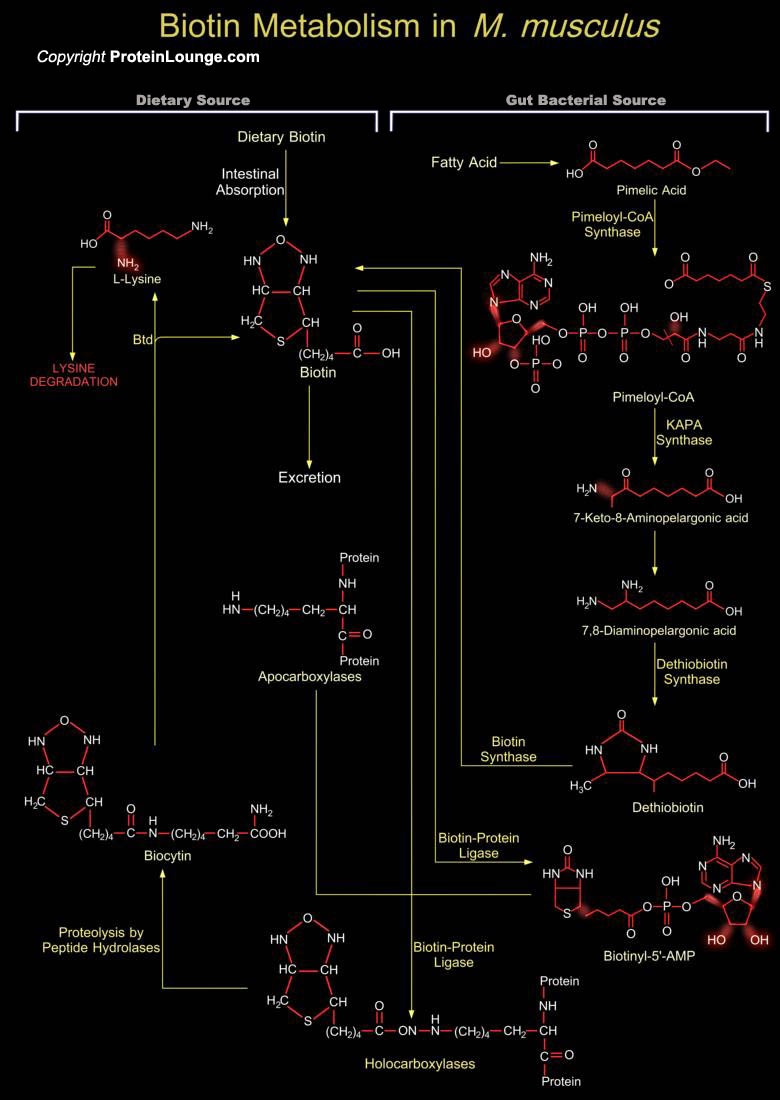
Biotin is a water-soluble vitamin found in all organisms that functions as a cofactor of Biotin-dependent carboxylases. It belongs to the B-Complex group of Vitamins and is an essential micronutrient for all mammals. The role of Biotin (or Vitamin-H) in Carboxylases is to act as vector for carboxyl-group transfer between donor and acceptor molecules during Carboxylation reaction (Ref.1). In M. musculus (Mus musculus), Biotin is a covalently bound as a prosthetic group in Biotin-dependent Carboxylases. It is covalently attached to Carboxylases by the action of Biotin-Protein Ligase. As a co-factor Biotin changes Apocarboxylases into active Holocarboxylases. For Biotin-Protein Ligase, Biotin addition occurs as an ATP-dependent, two-step reaction that, in the first[..]
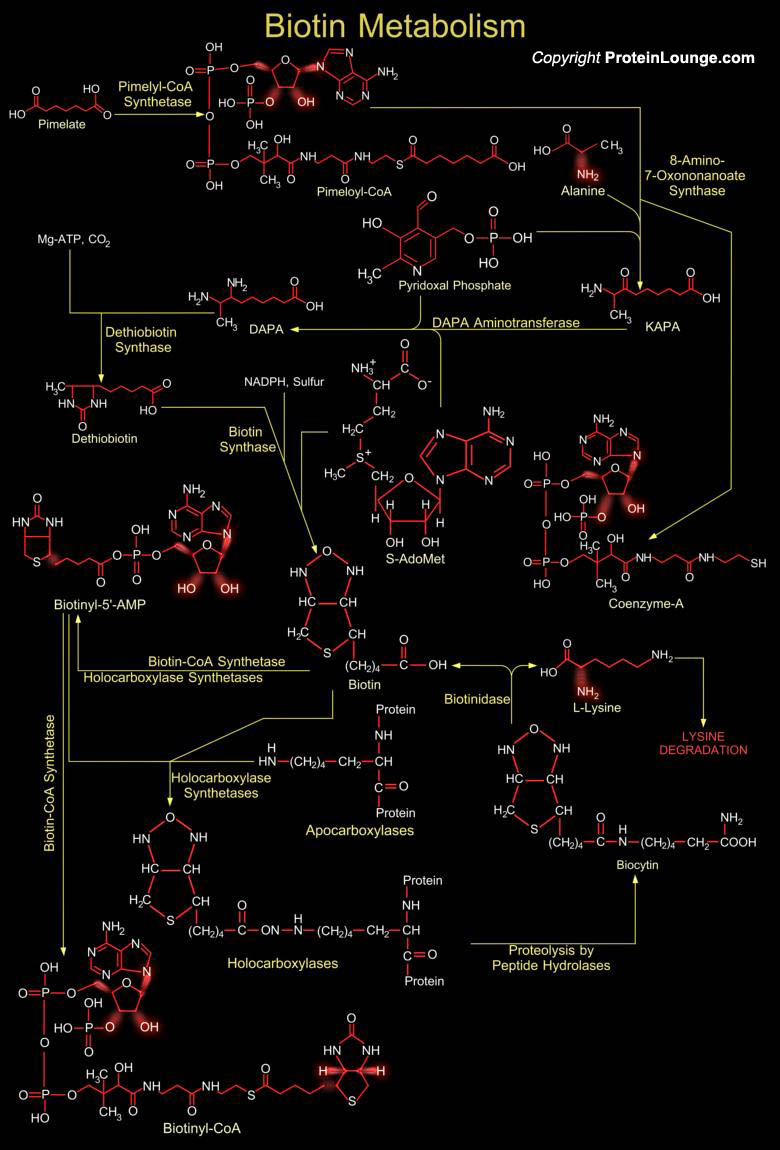
Biotin is a water-soluble Vitamin required by all organisms by virtue of its essential role in carboxylation reactions. Whereas animals lack the ability to synthesize Biotin, it is synthesized by microorganisms and plants and therefore is widespread in the food supply at low concentrations relative to most water-soluble Vitamins (Ref.1). The highest level of Biotin occurs in organ meats such as liver and kidney, but it is low in meats, most vegetables, and fruits. It is also known as Vitamin-H. This member of Vitamin B-Complex group is colorless, withstands high temperatures and is orthorhombic when crystallized. It consists of two fused rings: an Imidazol (Ureido) and a Sulfur-containing (Tetrahydrothiophene) ring; and the latter is extended via a Valeric acid side[..]
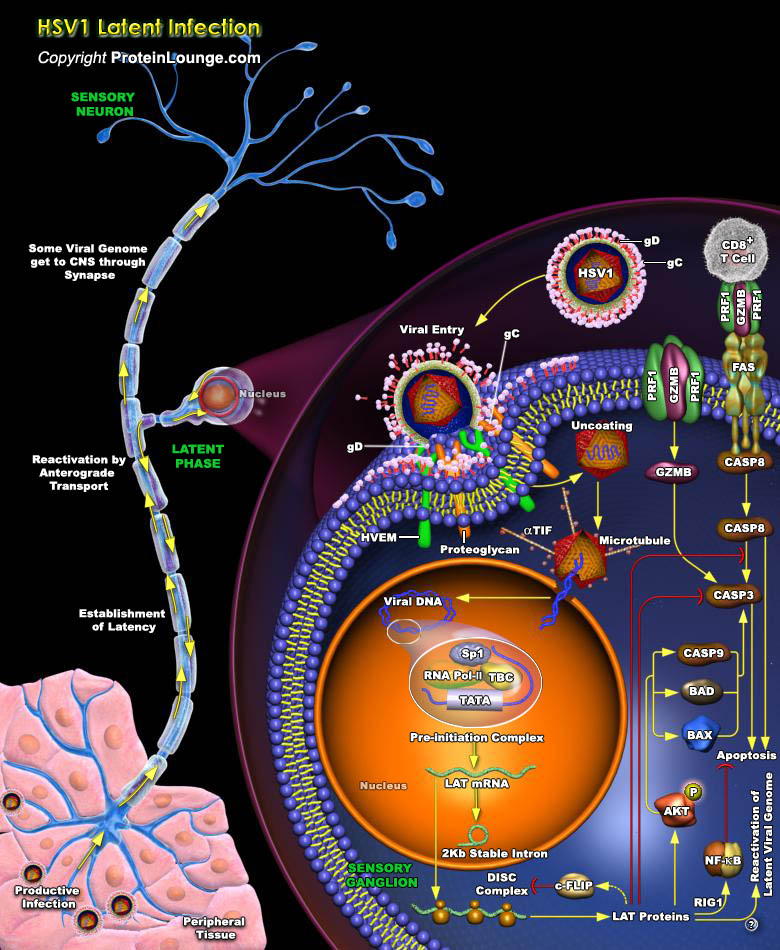
Herpesviridae is a large family of viruses including several members that are pathogenic to humans, causing a variety of disorders ranging from cold sores and chicken pox to less frequent conditions such as blindness and cancers. HSV1 (Herpes Simplex Virus Type-1), the prototypical member of this family, is a large DNA-containing neurotropic virus endemic in all human populations. Following an initial infection in epithelial cells, the virus spreads to neurons of sensory ganglia, where it becomes latent. The virus emerges sporadically from latency, causing recurrent mucocutaneous lesions. Reactivation of the latent genomes upon stress can lead to re-infection of the epithelial tissue by anterograde spread or in immunosuppressed patients to life-threatening diseases[..]
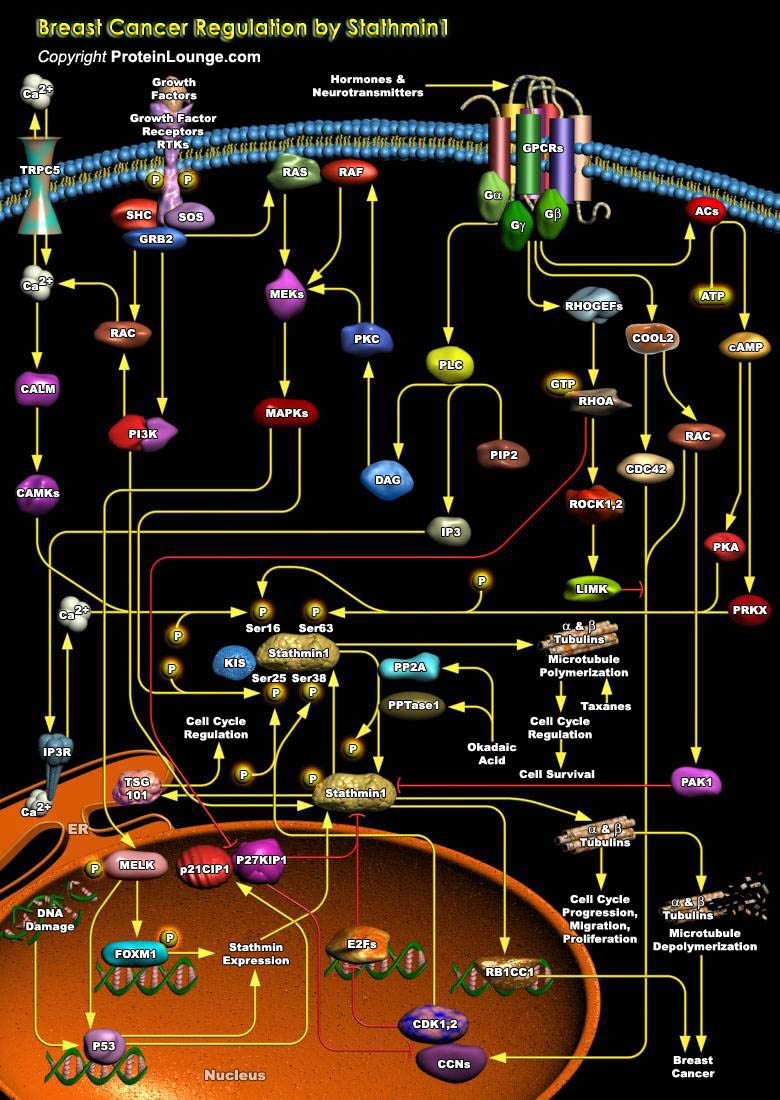
Stmn1 (Stathmin-1) also referred to as Op18 (Oncoprotein-18) is a major regulator of microtubule dynamics. It is an evolutionarily well conserved 17 kDa cytoplasmic phosphoprotein that is highly expressed in a wide variety of cancers and its high abundance seems to be necessary for the maintenance of the transformed phenotypes. Breast cancers exhibit high levels of Stmn1 and may be resistant to anti-microtubule agents. Stmn1 destabilizes microtubule polymers of Alpha and Beta-Tubulin subunits, by promoting catastrophes that ultimately results in deregulation of cell cycle, hampering cell survival (Ref.1). One of the key properties of microtubules is that of ‘dynamic instability’. Dynamic instability comprises the continuous switching between catastrophes[..]
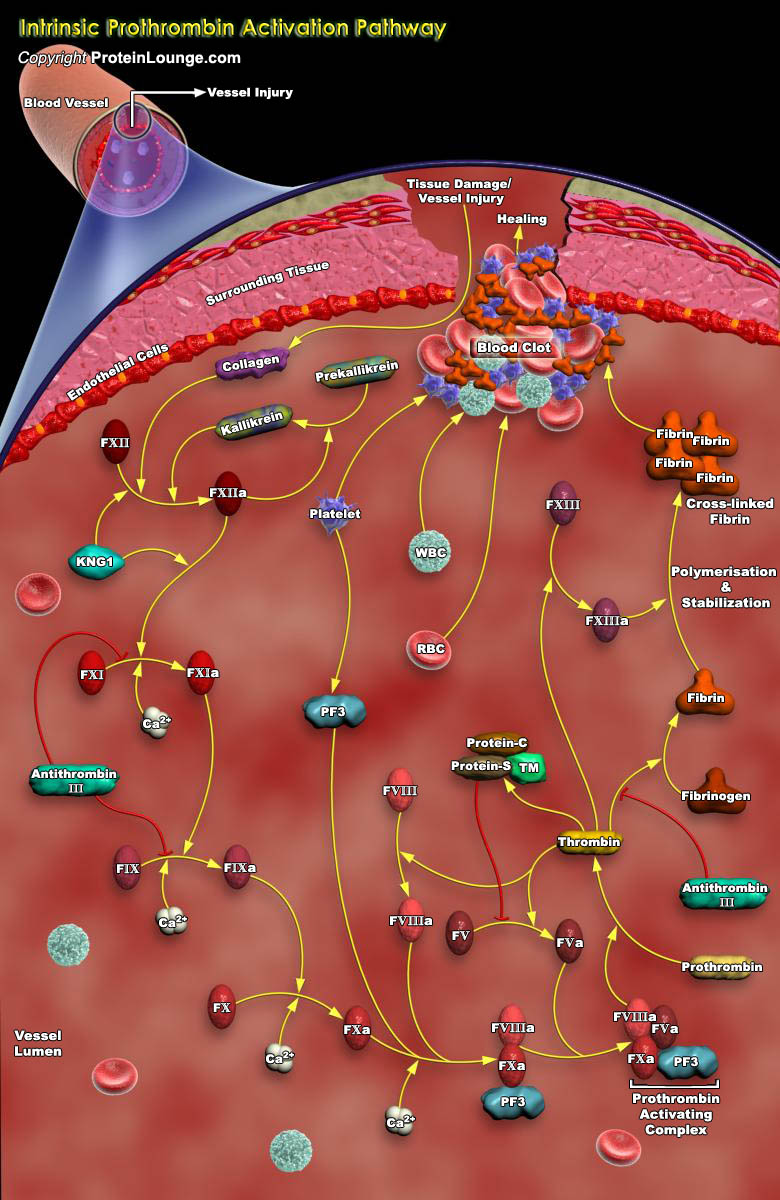
The process by which the body prevents blood loss is referred to as coagulation. Thrombin/TFIIa (Activated Factor-II) is a multifunctional serine proteinase, which serves as an essential component of the process of Blood Coagulation - the hemostatic process of greatest interest. When a blood vessel is injured, bleeding is stopped by clotting (Coagulation) factors that form a thrombus (clot) of Fibrin threads which trap platelet aggregates and other blood cells. Clotting is a mechanism used by the body to stop bleeding. Our body needs to be able to clot blood as this is the normal way bleeding is stopped to begin the healing following an injury. The first step in clotting is adhesion of platelets, which are fragments of blood cells that circulate in the blood, to the[..]
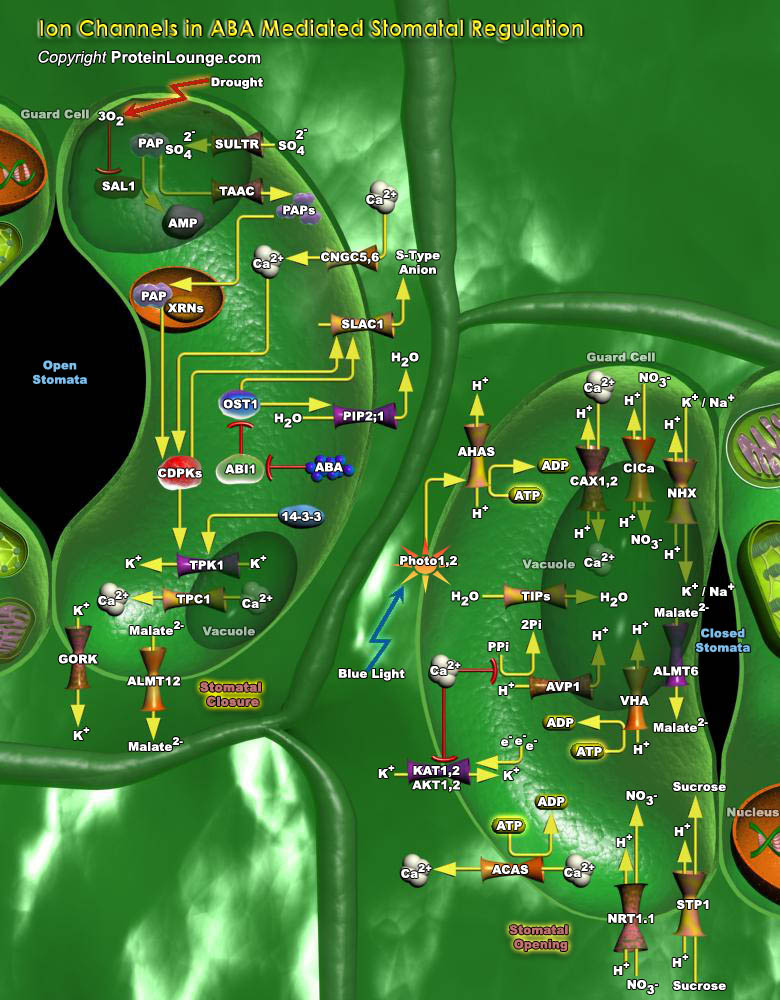
Plant growth and development are regulated by Internal Signals and by External Environmental Conditions. One important regulator that coordinates growth and development with responses to the environment is the Sesquiterpenoid hormone ABA (Abscisic Acid). ABA plays important roles in many cellular processes including Seed Development, Dormancy, Germination, Vegetative Growth, Leaf Senescence, Stomatal Closure, and Environmental Stress Responses. ABA is synthesized in almost all cells, but its transport from roots to shoots and the recirculation of ABA in both Xylem and Phloem are important aspects of its physiological role. The most extensively investigated developmental and physiological effects of ABA are those involved in Seed Maturation and Dormancy and in the[..]
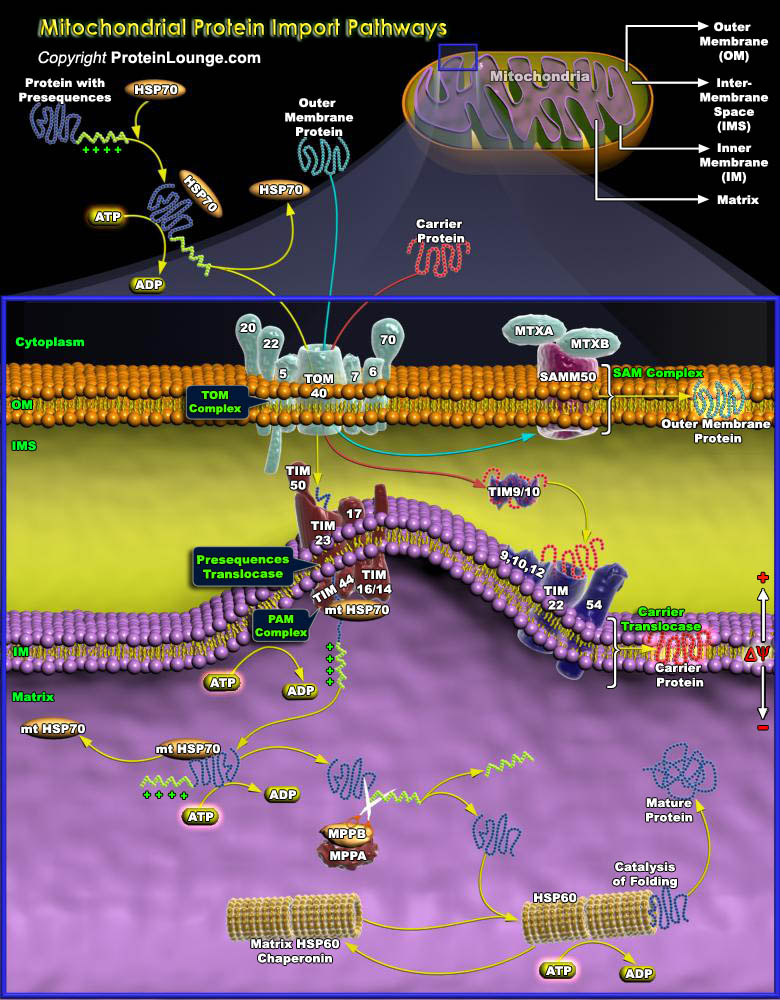
Eukaryotic cells are characterized by extensive subcellular compartmentation whose structural basis is the existence of a number of highly specialized membrane-bound organelles. Each of these organelles is equipped with a specific subset of proteins allowing them to fulfill specific tasks in cellular metabolism. Mitochondria are present in virtually all eukaryotic cells. Mitochondria are the compartments responsible for respiration and oxidative phosphorlyation. They are made up of two highly specialized membrane systems, the OM (Outer Membrane) and IM (Inner Membrane), and two aqueous compartments, the Matrix and the IMS (Intermembrane Space). More than 90% of the mitochondrial proteins are encoded on the nuclear DNA and then synthesized as precursors on cytosolic[..]
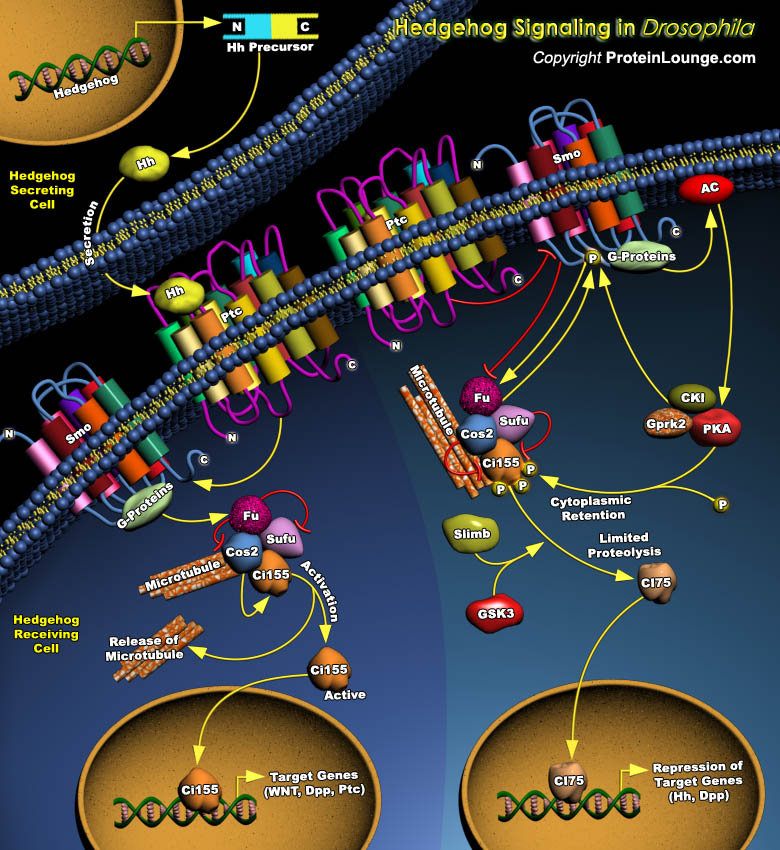
The Hh (Hedgehog) proteins are evolutionarily conserved signaling molecules that control the normal growth and patterning of diverse animals including Drosophila and humans. In flies, Hh is required for multiple developmental processes such as embryonic segment patterning, eye and appendage development. A single Drosophila Hedgehog gene has three mammalian counterparts: SHh (Sonic Hedgehog), IHh (Indian Hedgehog), and DHh (Desert Hedgehog). The Hh proteins are extracellular signaling molecules involved in embryonic patterning and organogenesis (Ref.1 & 2). In Drosophila, Hh activates the Smo (Smoothened) G-protein-coupled receptor signal transduction pathway through its reaction with the Ptc (Patched) receptor.[..]
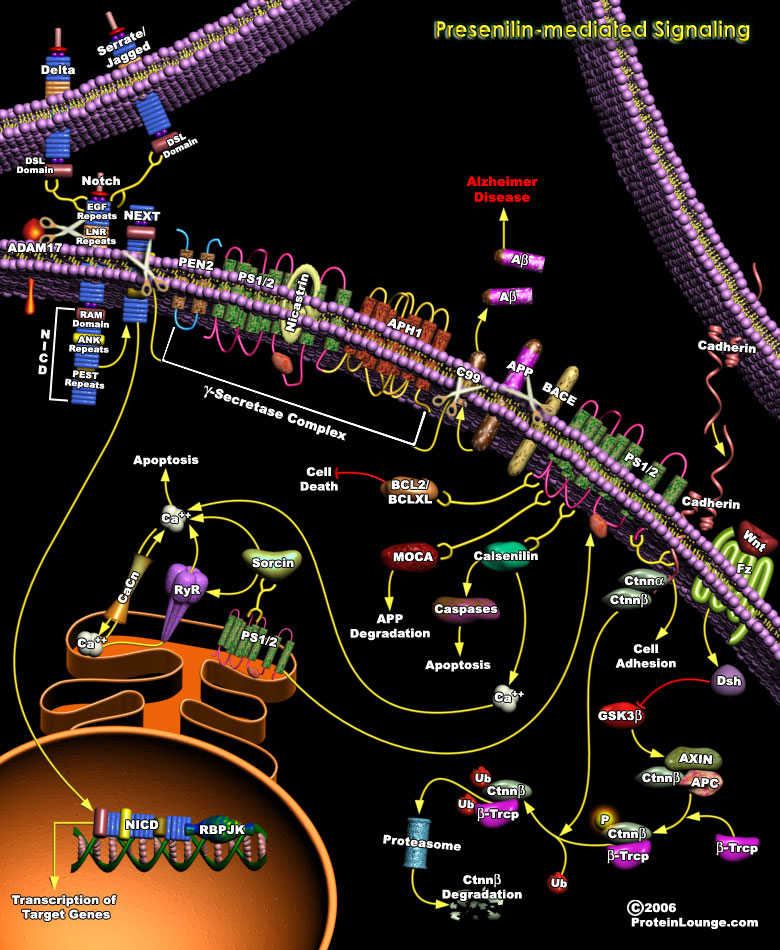
Presenilins are polytopic transmembrane proteins, mutations in which are associated with the occurrence of Early-onset familial Alzheimer's disease, a rare form of the disease that results from a single-gene mutation. The physiological functions of Presenilins are unknown, but they may be related to Developmental signaling, Apoptotic signal transduction, or processing of selected proteins, such as the Beta-APP (Beta-Amyloid precursor protein). Presenilin homologues identified in species that do not have an Alzhemier's disease suggests that they may have functions unrelated to the disease, homologues having been identified in Mouse, Drosophila melanogaster, Caenorhabditis elegans and other members of the eukarya including Plants. In humans, there are two known[..]
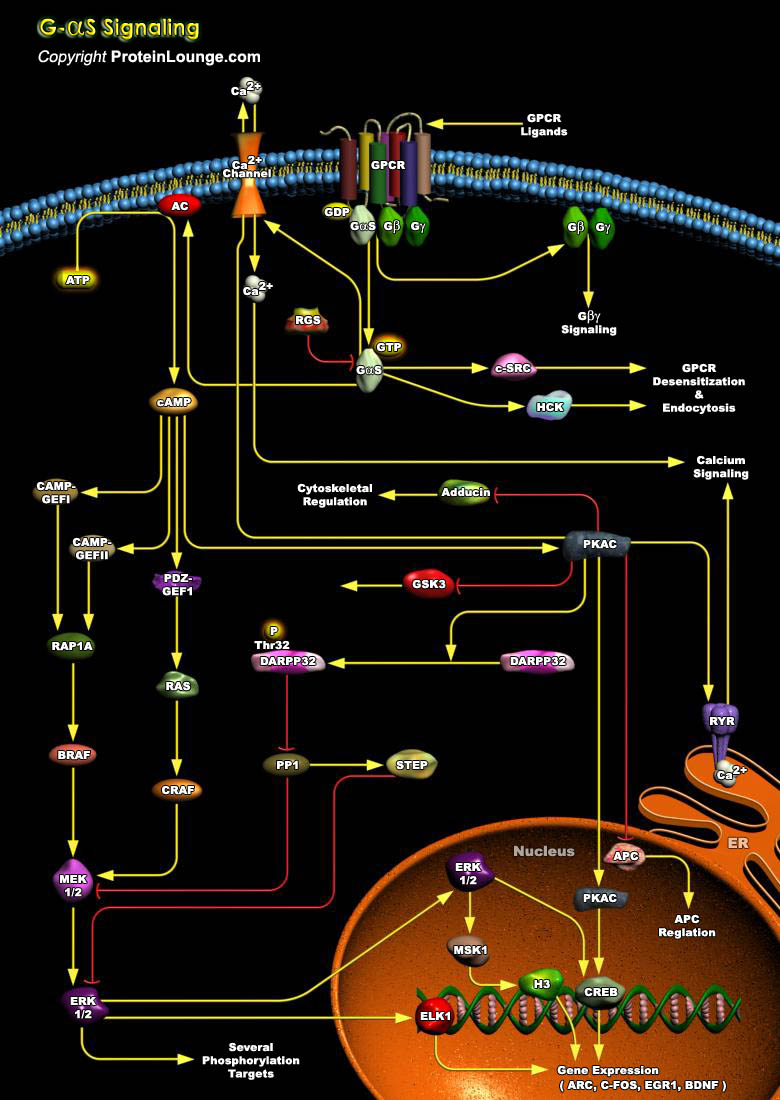
G-proteins are heterotrimers, consisting of Alpha, Beta and Gamma subunits, and are involved in signaling to distinct effectors. Heterotrimeric G-proteins convey extracellular signals that activate 7-transmembrane-spanning GPCRs (G-Protein-Coupled Receptors) to the inside of cells, communicating this information to effector proteins and thus initiating changes in cell behaviour. GPCRs constitute a large and diverse family of proteins whose primary function is to transduce extracellular stimuli into intracellular signals. GPCRs recognize a variety of ligands and stimuli including Peptide and non-peptide Hormones and Neurotransmitters, Chemokines, Prostanoids and Proteinases, Biogenic amines, Nucleosides, Lipids, Growth factors, Odorant molecules and Light. GPCRs turn on[..]
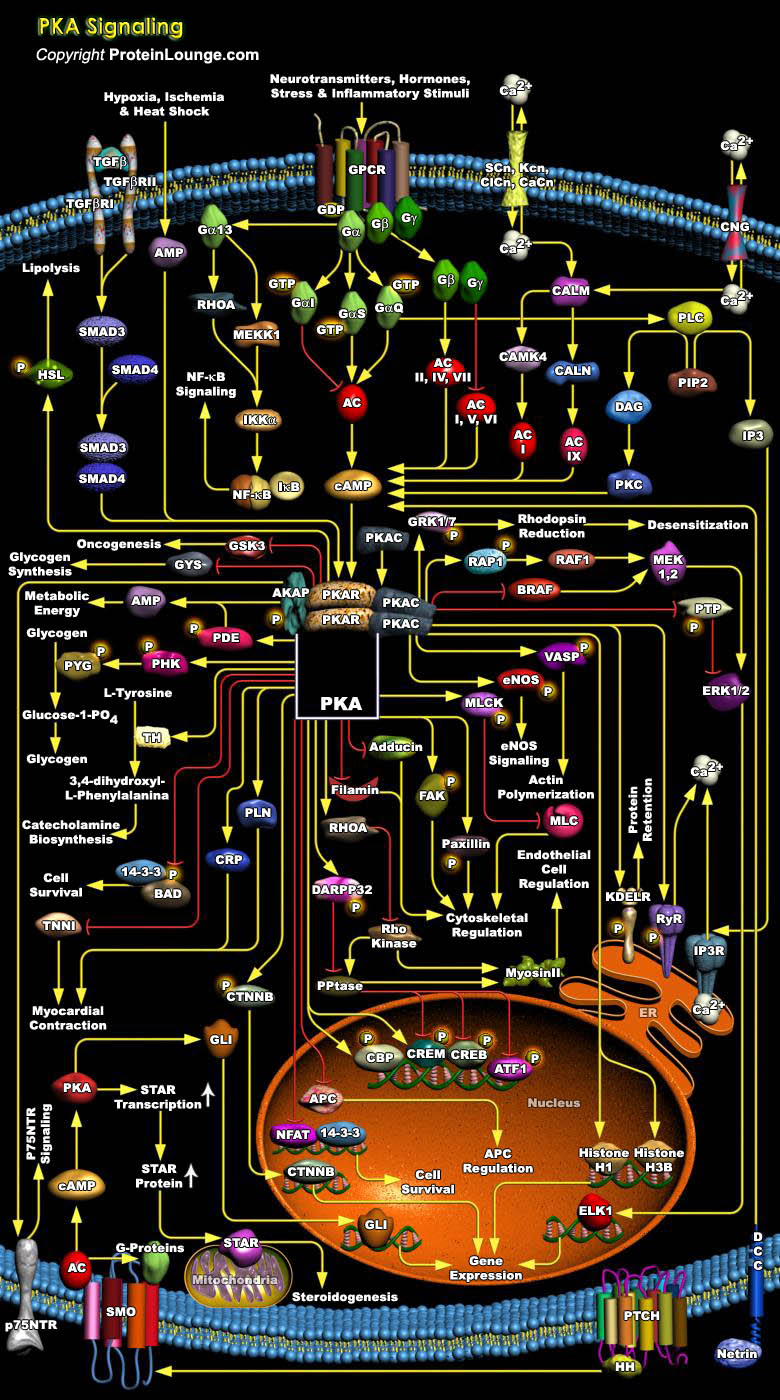
PKA (Protein Kinase-A) is an enzyme that regulates processes as diverse as growth, development, memory, and metabolism. In its inactivated state, PKA exists as a tetrameric complex of two Catalytic subunits (PKA-C) and a Regulatory (PKA-R) subunit dimer. To date, four regulatory subunits have been identified (RI-Alpha, RI-Beta, RII-Alpha and RII-Beta), which are differentially distributed in mammalian tissues. RI-Alpha and RII-Alpha are expressed ubiquitously, RI-Beta is expressed predominantly in the brain and RII-Beta is expressed primarily in brain, adrenal and adipose tissues. These R subunits define Types-I and II PKA, with both types of holoenzyme having three potential C subunits (Alpha, Beta and Gamma). The C-Alpha and Beta subunits share 93% homology and[..]
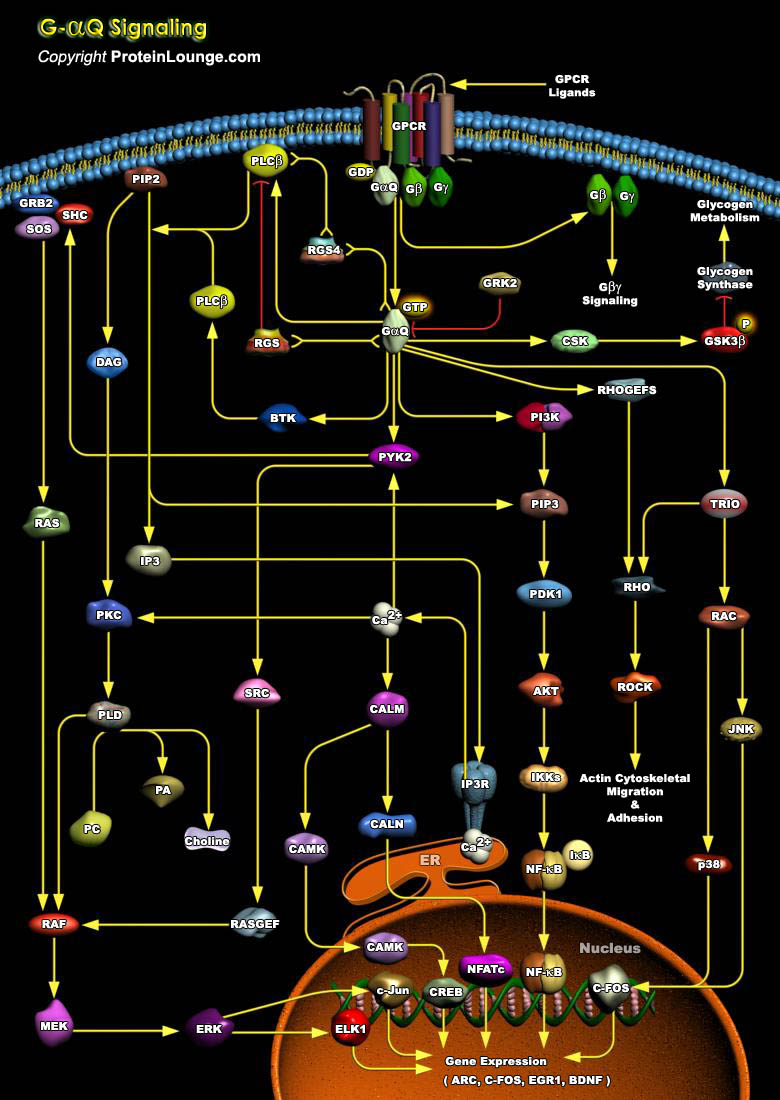
GPCR (G-Protein-Coupled Receptors) constitute a large and diverse family of proteins whose primary function is to transduce extracellular stimuli into intracellular signals. They are among the largest and most diverse protein families in mammalian genomes. Also termed Serpentine receptors, GPCRs are polytopic membrane proteins that share a common structure with seven transmembrane segments, but sequence similarity is minimal among the most distant GPCRs. GPCRs recognize a variety of ligands and stimuli including Peptide and non-peptide Hormones and Neurotransmitters, Chemokines, Prostanoids and Proteinases, Biogenic amines, Nucleosides, Lipids, Growth factors, Odorant molecules and Light. These receptors affect the generation of small molecules that act as[..]

